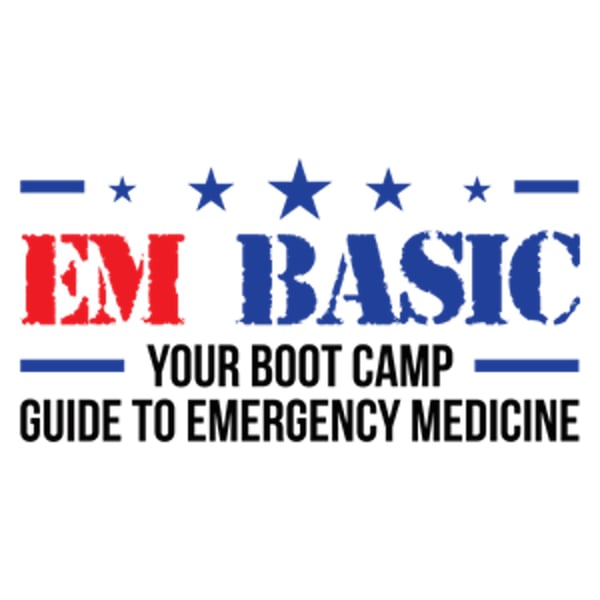Summary
In today's episode we are going to talk about documentation in the ED. It is very important that we are complete but concise in our documentation in order to provide an accurate record for the patient's ED patient to protect them and ourselves from problems down the road. Good documentation is good patient care so we need to know how to do this efficiently. We will review each part of the chart starting with the triage note and ending how to give good discharge instructions. We'll also review some tips and tricks of the trade regarding abbreviations that will make your charting faster, how to document interactions with our consultants, and even what to do when you have to document a difficult situation with a consultant.
Transcript
Click on a timestamp to play from that location
| 0:00.0 | This is Steve Carroll, and you're listening to the Em Basic podcast. Today's episode is all about |
| 0:05.7 | documentation in the ED. This is not traditionally thought of as core content, but I've had a lot of |
| 0:11.5 | requests to discuss this topic. Documentation is something that we do with every patient, so it's |
| 0:17.1 | important that we get it right. Good documentation is key towards protecting yourself |
| 0:21.5 | and the patient. In this episode, we'll talk about how to document efficiently and effectively |
| 0:26.8 | in the EAD and some tricks to the trade. As always, this podcast doesn't represent the views of |
| 0:31.3 | Parenthood Department of Fence, US Army, the Fort Hood Post Command. Before we go any further, |
| 0:35.6 | I want to talk about my views on documentation. |
| 0:38.3 | If you ask 10 EM docs how they document, you'll get 12 different answers. |
| 0:43.3 | There is no one right way to document your patient encounter. |
| 0:46.3 | These are just my views on the subject. |
| 0:48.3 | Whenever we talk about documentation, it always seems to be framed in the context of, |
| 0:53.3 | this is what you need to do so you |
| 0:54.9 | don't get sued. Others will say that what you write down won't matter one bit. If there is some |
| 1:00.7 | bad outcome, the plaintiff's attorney will take your chart, blow it up to a hundred point type, |
| 1:05.6 | and take everything out of context. I fall somewhere in the middle on this. I don't think that there's such thing as bold-proof |
| 1:12.2 | documentation, but I also believe that good documentation may save you a lot of time and headaches |
| 1:17.2 | later. Good documentation can be the difference between just doing a deposition instead of going |
| 1:22.6 | to trial, or maybe even not having to do that deposition in the first place. More importantly, good documentation is good for your patients |
| 1:30.3 | because it can help you and anyone else treating them down the road, |
| 1:34.2 | know what was done, and know what you were thinking. |
| 1:37.4 | So let's talk about how to approach documentation from the beginning. |
... |
Please login to see the full transcript.
Disclaimer: The podcast and artwork embedded on this page are from EM Basic LLC, and are the property of its owner and not affiliated with or endorsed by Tapesearch.
Generated transcripts are the property of EM Basic LLC and are distributed freely under the Fair Use doctrine. Transcripts generated by Tapesearch are not guaranteed to be accurate.
Copyright © Tapesearch 2025.

